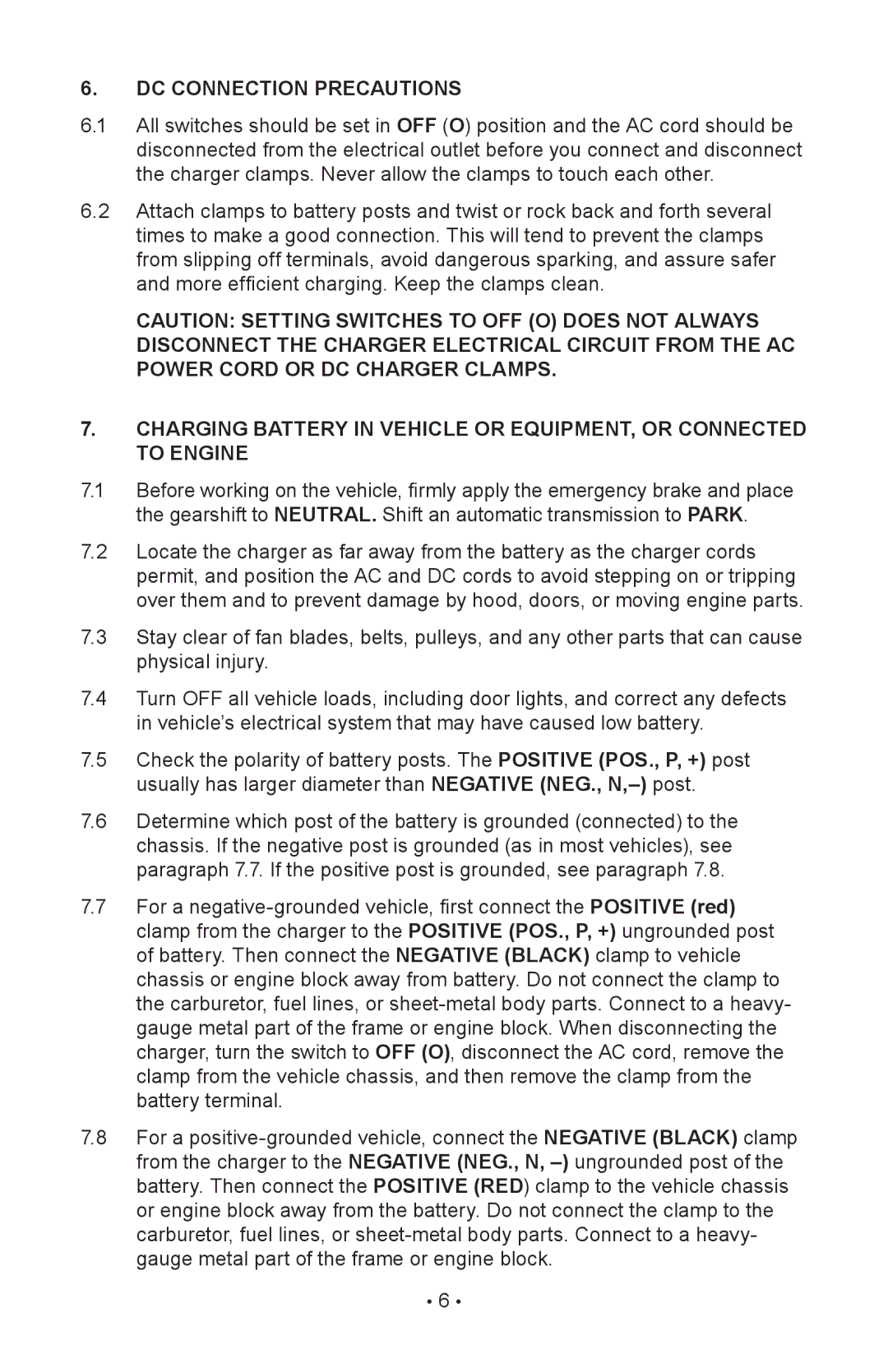6.DC CONNECTION PRECAUTIONS
6.1All switches should be set in OFF (O) position and the AC cord should be disconnected from the electrical outlet before you connect and disconnect the charger clamps. Never allow the clamps to touch each other.
6.2Attach clamps to battery posts and twist or rock back and forth several times to make a good connection. This will tend to prevent the clamps from slipping off terminals, avoid dangerous sparking, and assure safer and more efficient charging. Keep the clamps clean.
CAUTION: Setting switches to OFF (O) does not always disconnect the charger electrical circuit from the AC power cord or DC charger clamps.
7.CHARGING BATTERY IN VEHICLE OR EQUIPMENT, OR CONNECTED TO ENGINE
7.1Before working on the vehicle, firmly apply the emergency brake and place the gearshift to NEUTRAL. Shift an automatic transmission to PARK.
7.2Locate the charger as far away from the battery as the charger cords permit, and position the AC and DC cords to avoid stepping on or tripping over them and to prevent damage by hood, doors, or moving engine parts.
7.3Stay clear of fan blades, belts, pulleys, and any other parts that can cause physical injury.
7.4Turn OFF all vehicle loads, including door lights, and correct any defects in vehicle’s electrical system that may have caused low battery.
7.5Check the polarity of battery posts. The POSITIVE (POS., P, +) post usually has larger diameter than NEGATIVE (NEG.,
7.6Determine which post of the battery is grounded (connected) to the chassis. If the negative post is grounded (as in most vehicles), see paragraph 7.7. If the positive post is grounded, see paragraph 7.8.
7.7For a
7.8For a
• •
